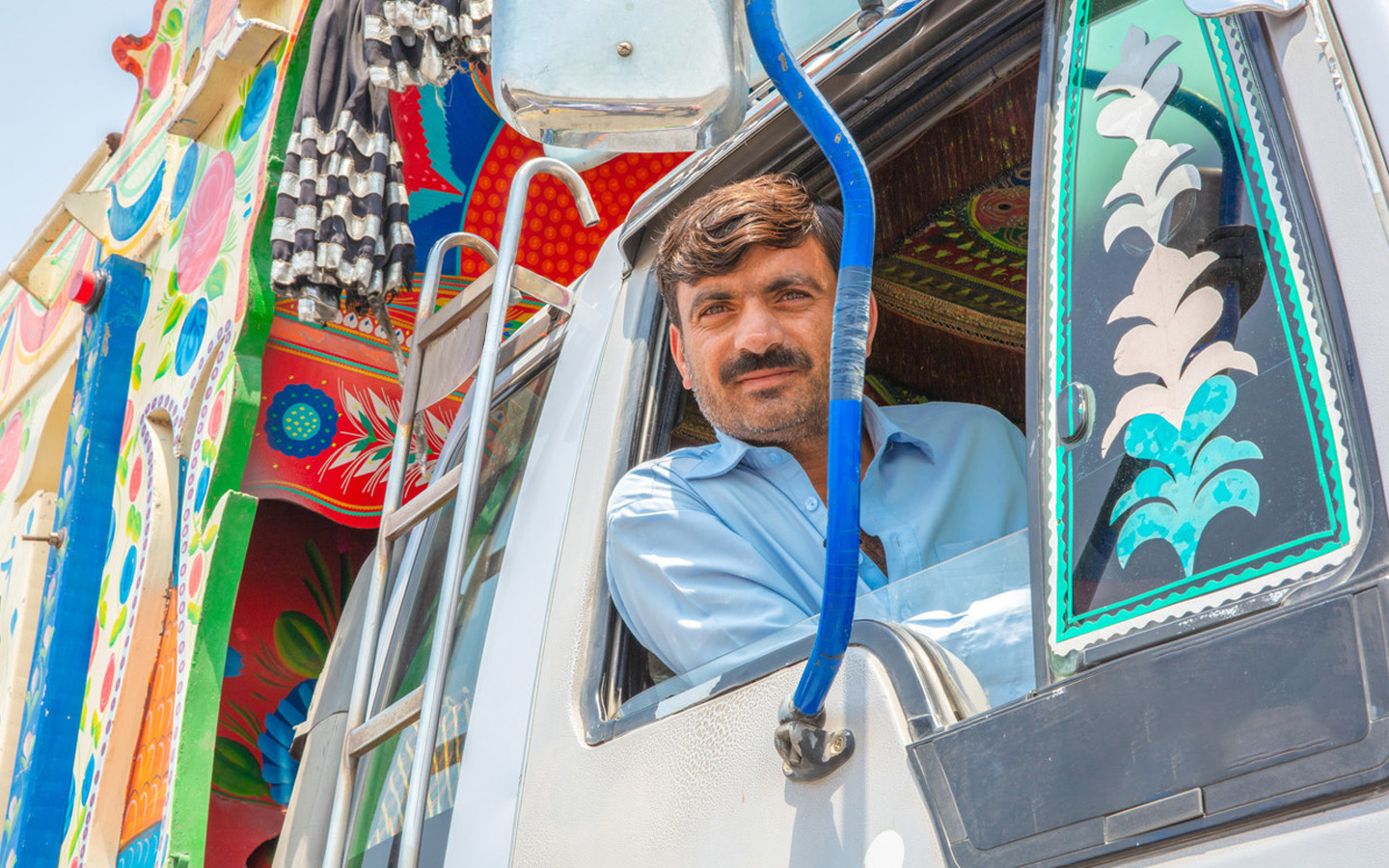Opening up the North with E-35
Constraints in logistics and transport are some of Pakistan’s challenges in raising trade competitiveness and attracting investment. With support from ADB and the United Kingdom through the Foreign, Commonwealth and Development Office, a multi-tranche financing facility helped achieve Pakistan’s shared objective of a sustainable and efficient road network by building a crucial expressway to the northern parts of the country.
Setting targets
In Pakistan, logistics is crucial to raising competitiveness and attracting private sector investment. But logistics is also a bottleneck to increasing productivity and diversifying the industrial base, which is necessary to provide sustainable jobs for a growing population.
Under the country’s strategic framework called “Vision 2030,” the Government of Pakistan plans to raise the trade-to-gross domestic product ratio from 30% to about 60%. This would be equivalent to $600 billion by 2030. To achieve this target, improving trade competitiveness and export diversification is vital.
Pakistan had a comprehensive road network improvement program to address the logistics and investment gap. The plan involved enhancing road networks to cut the time and cost of moving goods and services along the entire logistical chain.
In Pakistan, logistics is crucial to raising competitiveness and attracting private sector investment.
Specifically, the government intended to double the road density from 0.32 kilometers per square kilometer (km/km2) to 0.64 km/km2 by 2030. In addition to physical infrastructure improvements, the initiative includes meaningful policy and institutional actions aimed at providing a better environment for investment, industrial diversification, and the logistics industry.
Partnerships help out
Pakistan approved the National Trade Corridor Improvement Program in 2007, including new road construction and the improvement of over 3,500 km of roads, national highways, expressways, and motorways. The government requested ADB to partially finance the construction and improvement of expressways and motorways, representing 20% of the overall highway investment program.
ADB then approved a multi-tranche financing facility (MFF), National Trade Corridor Highway Investment Program (NTCHIP), with the first tranche approved in December 2007. The MFF was signed to improve connectivity along the National Trade Corridor, which became the Central Asia Regional Economic Cooperation (CAREC) Corridor 5 after Pakistan joined the CAREC program in 2010.
The second and third tranches were cofinanced by the United Kingdom (UK) through the Foreign, Commonwealth and Development Office (FCDO) under the Pakistan Economic Corridor Program. The FCDO provided grants of $82.4 million for tranche 2 and $39.2 million for tranche 3. The grant funds helped the country build crucial infrastructure at reduced rates. Tranches 2 and 3 closed on October 2017 and December 2017, respectively.
The NTCHIP aimed to construct a north–south access-controlled expressway system to link the country’s northern area to the existing expressway network and lead to better connectivity within Pakistan and with neighboring regions. This highway is the Hasanabdal–Havelian Expressway (or E-35), with the sections of the road divided among tranches. E-35 connects the existing Islamabad–Peshawar Motorway near Hasanabadal to Havelian.
Coming off the first tranche constructing a four-lane motorway from Faisalabad to Gojra (a section of the Pindi Bhattian–Multan motorway), the second tranche was to build a 39.6 km Hassanabdal–Sarai Saleh section. Tranche 3 aimed to complete the 19.1 km Sarai Saleh–Havelian section of the E-35 expressway to extend the safe and efficient regional network established under tranche 2.
Greater mobility, connectivity
Construction of the E-35 expressway has shortened travel time to Havelian by over 2 hours.
Tranche 2 completed the 39.6 km of a 6–lane access–controlled expressway between Hassanabdal and Sarai Saleh. Upon the government’s request, the completed section was expanded to six lanes from the original four to accommodate a higher traffic volume. Seventy-five National Highway Authority (NHA) staff members were also trained in social and environmental safeguards. Tranche 3, likewise, constructed the 19.1 km, 6–lane access–controlled expressway between Sarai Saleh and Havelian.
Institutional strengthening is crucial to safeguard the sustainability and continued optimal operation of the highway and its components. At the NTCHIP appraisal, capacity development of the NHA included a road sector policy study, road corridor management, human resources development, project preparatory and management assistance, and social and environmental management.
A separate technical assistance, Enabling Economic Corridors through Sustainable Transport Sector Development, approved in 2015 and financed by the UK for $15.4 million, implemented capacity-building activities for the NHA.
Through the technical assistance, the UK helped the government develop (i) the first National Transport Policy, approved by the Cabinet of the Government of Pakistan in May 2018; (ii) NHA’s business plan, which the National Highway Council approved in February 2019, and a new transport sector master plan. The plan aims to modernize NHA’s operation, reflecting international best practices; (iii) draft the National Road Safety Strategy, which was approved in November 2018; (iv) develop the Road Asset Management Guidance Notes and e-learning toolkit; and (v) develop the National Freight and Logistics Policy, Pakistan Railway Strategic Plan, National Seaport Development Plan, and Urban Transport Guidelines.
Project Details
Pakistan: National Trade Corridor Highway Investment Program
Cost
$238 million
- ADB Resources $117.6 million
- Government of Pakistan $38 million
Cofinancing Partner
- United Kingdom (Grant) $82.4 million
Dates
Approval Date 1 April 2014; 31 July 2015
Signing Date 17 September 2014; 1 September 2015
Completion Date 23 October 2017; 17 April 2018


